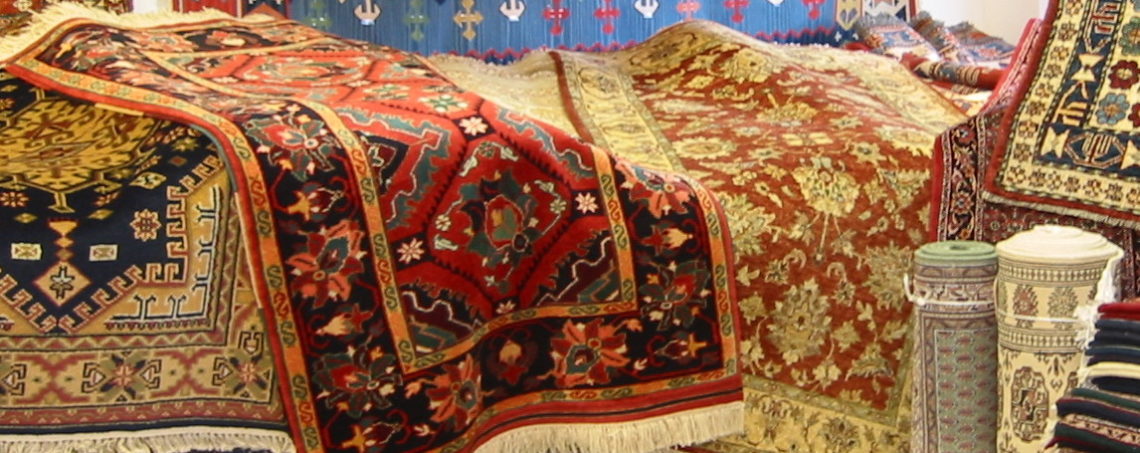FreshRug Oriental Rug Cleaning: Comprehensive Guide
FreshRug Oriental Rug Cleaning: Comprehensive Guide

Overview of FreshRug Oriental Rug Cleaning
Oriental rugs are timeless pieces of art that add elegance and warmth to any home. FreshRug Oriental Rug Cleaning specializes in maintaining the beauty and longevity of these precious textiles through expert cleaning and care. With years of experience and a deep understanding of rug craftsmanship, FreshRug offers specialized services that cater to the unique needs of each rug, ensuring they remain vibrant and in excellent condition.
Importance of Proper Rug Cleaning
Proper cleaning is crucial for the preservation of Oriental rugs. Unlike standard carpets, Oriental rugs are often handmade with delicate materials that require gentle and precise care. Regular cleaning not only enhances their appearance but also extends their life by removing dirt, dust, and allergens that can cause damage over time. Without proper maintenance, rugs can deteriorate, losing their color, texture, and overall appeal.
Brief History of Oriental Rugs
Oriental rugs have a rich history that dates back thousands of years. Originating from regions such as Persia (modern-day Iran), Turkey, China, India, and Morocco, these rugs are celebrated for their intricate designs and high-quality craftsmanship. Historically, Oriental rugs were a symbol of wealth and status, often used in palaces and homes of the elite. Today, they continue to be prized for their artistic value and cultural significance.
Types and Categories of Oriental Rugs
Persian Rugs
Persian rugs are perhaps the most renowned category of Oriental rugs. Known for their intricate patterns and exceptional craftsmanship, these rugs are often hand-knotted using fine wool or silk. Popular subtypes include Tabriz, Kashan, and Isfahan rugs, each with distinct design characteristics and regional influences.
Turkish Rugs
Turkish rugs, also known as Anatolian rugs, are distinguished by their geometric patterns and bold colors. These rugs often feature symbolic motifs that reflect the cultural heritage of the region. Key types include Hereke, Oushak, and Kilim rugs, which are highly valued for their artistic and historical significance.
Chinese Rugs
Chinese rugs are known for their rich symbolism and unique aesthetic, often featuring motifs such as dragons, phoenixes, and floral patterns. These rugs are typically made with high-quality wool and sometimes incorporate silk. Notable styles include Ningxia and Peking rugs, which are prized for their detailed craftsmanship and luxurious feel.
Indian Rugs
Indian rugs, particularly those from the Mughal period, are famous for their intricate designs and vibrant colors. These rugs often incorporate floral and paisley patterns, reflecting the artistic traditions of India. Agra and Jaipur rugs are popular examples, known for their high knot density and exquisite detailing.
Moroccan Rugs
Moroccan rugs, particularly the Berber rugs, are characterized by their bold, abstract patterns and earthy tones. These rugs are typically made from wool and feature a distinctive, handwoven texture. Beni Ourain and Azilal rugs are well-known examples, valued for their unique aesthetic and cultural significance.
Modern vs. Antique Rugs
Modern Oriental rugs often draw inspiration from traditional designs but incorporate contemporary elements, making them suitable for various interior styles. Antique rugs, on the other hand, are valued for their historical and artistic significance. These rugs often come with a provenance that adds to their allure and value, making them highly sought after by collectors.
Symptoms and Signs Your Rug Needs Cleaning
Visible Stains and Spills
One of the most obvious signs that your Oriental rug needs cleaning is the presence of visible stains and spills. These can come from a variety of sources, such as food, beverages, or even pet accidents. Over time, these stains can become deeply embedded in the rug fibers, making them difficult to remove without professional help.
Foul Odors
If your rug emits unpleasant odors, it is a clear indication that it needs cleaning. Odors can result from accumulated dirt, pet dander, and spills that have not been properly cleaned. These smells not only affect the ambiance of your home but can also signal deeper issues like mold or mildew growth within the rug fibers.
Allergic Reactions
Experiencing allergic reactions such as sneezing, coughing, or itchy eyes when near your rug can indicate that it is harboring allergens like dust mites, pollen, and pet dander. Regular cleaning can help reduce these allergens, improving indoor air quality and making your home a healthier environment.
Dust Accumulation
If you notice a significant amount of dust accumulating on your rug, it is a sign that it needs thorough cleaning. Dust can settle deep into the fibers, dulling the rug’s appearance and contributing to a variety of health issues. Regular vacuuming can help, but professional cleaning is often necessary to remove all the embedded dust.
Pet Hair and Dander
Pets can be a major source of dirt and hair on your rugs. While vacuuming can help remove surface hair, pet dander can penetrate deep into the fibers. This not only affects the rug’s appearance but can also exacerbate allergies and other health issues, making professional cleaning essential.
Color Fading
Over time, exposure to sunlight, dust, and dirt can cause the colors of your Oriental rug to fade. If you notice that the vibrant hues of your rug are becoming dull, it is a sign that it needs cleaning and possibly restorative care. Professional cleaning can help revive the colors and preserve the rug’s beauty.
Causes and Risk Factors for Rug Damage
Environmental Factors
Environmental factors such as humidity, temperature fluctuations, and exposure to sunlight can significantly impact the condition of your Oriental rug. High humidity can lead to mold and mildew growth, while excessive sunlight can cause the colors to fade. Proper placement and environmental control are crucial to maintaining your rug’s integrity.
Wear and Tear
Daily wear and tear, especially in high-traffic areas, can lead to significant damage over time. Foot traffic can cause the fibers to wear down and the rug to lose its original texture and appearance. Regular rotation and proper maintenance can help distribute the wear more evenly and prolong the rug’s life.
Improper Cleaning Methods
Using incorrect cleaning methods or harsh chemicals can cause irreversible damage to your Oriental rug. It’s essential to use appropriate cleaning techniques and products specifically designed for delicate rug fibers. Professional cleaning services have the expertise and equipment to clean rugs safely and effectively.
Pest Infestations
Oriental rugs can attract pests like moths, carpet beetles, and even rodents. These pests can cause significant damage by eating away at the fibers and leaving behind unsightly holes. Regular cleaning and proper storage can help prevent infestations and protect your rug from pest damage.
Sunlight Exposure
Prolonged exposure to direct sunlight can cause the colors of your Oriental rug to fade and the fibers to weaken. To prevent this, consider placing your rug in an area with limited sunlight or using window treatments to block harmful UV rays. Additionally, rotating the rug periodically can help distribute the exposure more evenly.
High Traffic Areas
Placing your Oriental rug in high-traffic areas such as hallways or living rooms can lead to accelerated wear and tear. Foot traffic can cause the fibers to flatten and the rug to lose its original texture. Using rug pads and rotating the rug regularly can help mitigate the effects of high traffic and preserve its appearance.
Diagnosis and Tests for Rug Condition
Visual Inspection
A thorough visual inspection is the first step in diagnosing the condition of your Oriental rug. This involves looking for visible signs of damage such as stains, discoloration, and wear patterns. A detailed inspection can help identify areas that require special attention during the cleaning process.
Fiber Analysis
Fiber analysis involves examining the rug’s materials to determine the appropriate cleaning methods. Different fibers, such as wool, silk, or cotton, have specific cleaning requirements. Understanding the composition of your rug is crucial for selecting the right cleaning products and techniques to avoid damage.
Dye Stability Tests
Before any cleaning process, it’s essential to conduct dye stability tests to ensure that the colors will not bleed or fade. This involves testing a small, inconspicuous area of the rug with the cleaning solution. If the dyes remain stable, it indicates that the cleaning process can proceed safely.
pH Testing
pH testing helps determine the acidity or alkalinity of the rug’s fibers. Using cleaning solutions with the wrong pH level can cause damage or discoloration. pH testing ensures that the cleaning products used are compatible with the rug’s fibers, preventing potential harm.
Moisture Content Measurement
Measuring the moisture content of the rug is important to prevent mold and mildew growth. High moisture levels can lead to these issues, especially in humid environments. Professional cleaners use specialized equipment to measure and control the moisture content during the cleaning process, ensuring the rug dries properly.
UV Light Examination
UV light examination can reveal hidden issues such as pet urine stains, mold, or mildew that are not visible to the naked eye. This technique helps identify areas that require deep cleaning or specific treatments, ensuring a thorough and effective cleaning process.
Treatment Options for Rug Cleaning
Professional Cleaning Services
Professional cleaning services are often the best option for Oriental rug care. These services use specialized equipment and techniques to clean rugs thoroughly without causing damage. Professionals can handle complex issues such as stain removal, odor neutralization, and color restoration, ensuring your rug remains in pristine condition.
DIY Cleaning Methods
While professional cleaning is recommended, there are some DIY methods that can help maintain your rug between professional cleanings. These include gentle vacuuming, spot cleaning with mild detergents, and using natural remedies like baking soda for odor removal. However, it’s important to avoid harsh chemicals and aggressive scrubbing, which can damage the rug.
Stain Removal Techniques
Effective stain removal requires understanding the type of stain and the appropriate cleaning solution. Common techniques include blotting the stain with a clean cloth, using a mixture of water and mild detergent, and applying specialized stain removers. It’s crucial to act quickly and avoid rubbing the stain, which can spread it further.
Odor Neutralization
Odor neutralization involves removing the source of the odor and using products that eliminate smells rather than masking them. Baking soda is a popular natural deodorizer, while professional services may use specialized equipment to deep clean and remove persistent odors. Regular maintenance can help prevent odors from becoming a recurring issue.
Dust and Dirt Removal
Regular vacuuming is essential for removing surface dust and dirt from your Oriental rug. Use a vacuum with a beater bar or rotating brush to agitate the fibers and lift debris. For deeper cleaning, professional services use techniques like dusting and air washing to remove embedded dirt and dust, preserving the rug’s appearance and health.
Color Restoration
Color restoration involves revitalizing the faded colors of your Oriental rug. This process may include deep cleaning to remove dirt and stains, followed by treatments that restore the original vibrancy of the dyes. Professional services have the expertise to perform color restoration safely, ensuring the rug’s patterns and hues remain intact.
Preventive Measures for Rug Maintenance
Regular Vacuuming
Regular vacuuming is one of the most effective ways to maintain your Oriental rug. Vacuuming removes surface dirt and debris, preventing them from becoming embedded in the fibers. Aim to vacuum your rug at least once a week, using a vacuum with adjustable suction to avoid damaging delicate fibers.
Using Rug Pads
Rug pads provide cushioning and support, reducing wear and tear from foot traffic. They also help keep the rug in place, preventing slips and falls. Rug pads can extend the life of your rug by absorbing impact and reducing friction between the rug and the floor.
Rotating Rugs
Rotating your rug every few months helps distribute wear evenly, preventing specific areas from becoming worn out. This is especially important for rugs in high-traffic areas. Regular rotation ensures that all parts of the rug receive equal exposure to sunlight and foot traffic, maintaining its overall appearance.
Avoiding Direct Sunlight
Direct sunlight can cause the colors of your Oriental rug to fade over time. To protect your rug, place it in an area with limited sunlight or use window treatments to block UV rays. You can also rotate the rug periodically to ensure even exposure and prevent specific areas from fading faster.
Prompt Spill Cleanup
Cleaning up spills promptly is crucial to prevent stains and damage. Blot the spill with a clean cloth to absorb as much liquid as possible, then use a mild detergent solution to clean the area. Avoid rubbing the spill, as this can push the liquid deeper into the fibers and spread the stain.
Professional Maintenance Plans
Consider enrolling in a professional maintenance plan for your Oriental rug. These plans typically include regular cleaning, inspections, and minor repairs, ensuring your rug remains in excellent condition. Professional maintenance plans provide peace of mind and help preserve the rug’s beauty and value over time.
Personal Stories or Case Studies
Success Stories from FreshRug Clients
Many clients have experienced remarkable transformations with FreshRug Oriental Rug Cleaning. For example, one client had a heavily stained and faded antique Persian rug that was restored to its original beauty through professional cleaning and color restoration services. The client was thrilled with the results and praised the meticulous care and expertise of the FreshRug team.
Challenges Faced in Rug Restoration
Restoring Oriental rugs can present various challenges, such as dealing with severe stains, extensive damage, or delicate fibers. One case involved a Turkish rug that had been damaged by moths. The FreshRug team carefully repaired the holes and performed a deep cleaning to remove any remaining pests, ultimately saving the rug from further deterioration.
Transformations of Antique Rugs
Antique rugs often require special attention due to their age and historical value. FreshRug has successfully transformed many antique rugs, revitalizing their colors and restoring their structural integrity. One notable case involved an Indian rug from the Mughal period, which underwent extensive cleaning and restoration to bring back its intricate designs and vibrant colors.
Expert Insights on Oriental Rug Care
Tips from Cleaning Professionals
Cleaning professionals emphasize the importance of regular maintenance to preserve the beauty and longevity of Oriental rugs. They recommend vacuuming frequently, addressing spills immediately, and scheduling professional cleanings at least once a year. Additionally, they advise against using harsh chemicals and advocate for gentle, fiber-specific cleaning solutions.
Advice from Rug Dealers
Rug dealers offer valuable insights into choosing and caring for Oriental rugs. They suggest looking for rugs with high knot density, which indicates better quality and durability. When it comes to care, they recommend rotating the rug periodically and avoiding prolonged exposure to sunlight to prevent fading. Dealers also stress the importance of professional cleaning for maintaining the rug’s value.
Insights from Textile Experts
Textile experts highlight the significance of understanding the materials and construction of Oriental rugs. They explain that different fibers and dyes require specific cleaning methods to avoid damage. Experts also discuss the historical and cultural context of Oriental rugs, emphasizing their artistic value and the need for careful preservation to maintain their beauty and heritage.
Recap of Key Points
Proper care and maintenance are essential for preserving the beauty and longevity of Oriental rugs. Regular cleaning, prompt spill cleanup, and preventive measures such as using rug pads and avoiding direct sunlight can significantly extend the life of your rug. Professional cleaning services offer specialized expertise to handle complex issues and restore the rug’s original vibrancy.
Importance of Regular Rug Maintenance
Regular maintenance not only enhances the appearance of your Oriental rug but also protects it from damage and deterioration. By investing in professional cleaning and following preventive measures, you can ensure that your rug remains a treasured part of your home for years to come. Proper care is crucial for preserving both the aesthetic and monetary value of your rug.
Call to Action for Further Education
To learn more about Oriental rug care and maintenance, consider reaching out to experts in the field or enrolling in a professional maintenance plan. Staying informed about the best practices for rug care will help you protect your investment and enjoy the timeless beauty of your Oriental rug.
Contact Us
646 423 8297
Our Location:



Submit your review | |
